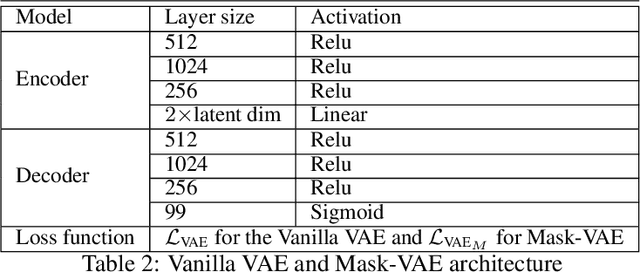Rodrigue Décatoire
A Markov Random Field Multi-Modal Variational AutoEncoder
Aug 18, 2024



Abstract:Recent advancements in multimodal Variational AutoEncoders (VAEs) have highlighted their potential for modeling complex data from multiple modalities. However, many existing approaches use relatively straightforward aggregating schemes that may not fully capture the complex dynamics present between different modalities. This work introduces a novel multimodal VAE that incorporates a Markov Random Field (MRF) into both the prior and posterior distributions. This integration aims to capture complex intermodal interactions more effectively. Unlike previous models, our approach is specifically designed to model and leverage the intricacies of these relationships, enabling a more faithful representation of multimodal data. Our experiments demonstrate that our model performs competitively on the standard PolyMNIST dataset and shows superior performance in managing complex intermodal dependencies in a specially designed synthetic dataset, intended to test intricate relationships.
A Meta-Generation framework for Industrial System Generation
Jun 08, 2023



Abstract:Generative design is an increasingly important tool in the industrial world. It allows the designers and engineers to easily explore vast ranges of design options, providing a cheaper and faster alternative to the trial and failure approaches. Thanks to the flexibility they offer, Deep Generative Models are gaining popularity amongst Generative Design technologies. However, developing and evaluating these models can be challenging. The field lacks accessible benchmarks, in order to evaluate and compare objectively different Deep Generative Models architectures. Moreover, vanilla Deep Generative Models appear to be unable to accurately generate multi-components industrial systems that are controlled by latent design constraints. To address these challenges, we propose an industry-inspired use case that incorporates actual industrial system characteristics. This use case can be quickly generated and used as a benchmark. We propose a Meta-VAE capable of producing multi-component industrial systems and showcase its application on the proposed use case.
A Binded VAE for Inorganic Material Generation
Dec 17, 2021



Abstract:Designing new industrial materials with desired properties can be very expensive and time consuming. The main difficulty is to generate compounds that correspond to realistic materials. Indeed, the description of compounds as vectors of components' proportions is characterized by discrete features and a severe sparsity. Furthermore, traditional generative model validation processes as visual verification, FID and Inception scores are tailored for images and cannot then be used as such in this context. To tackle these issues, we develop an original Binded-VAE model dedicated to the generation of discrete datasets with high sparsity. We validate the model with novel metrics adapted to the problem of compounds generation. We show on a real issue of rubber compound design that the proposed approach outperforms the standard generative models which opens new perspectives for material design optimization.
 Add to Chrome
Add to Chrome Add to Firefox
Add to Firefox Add to Edge
Add to Edge